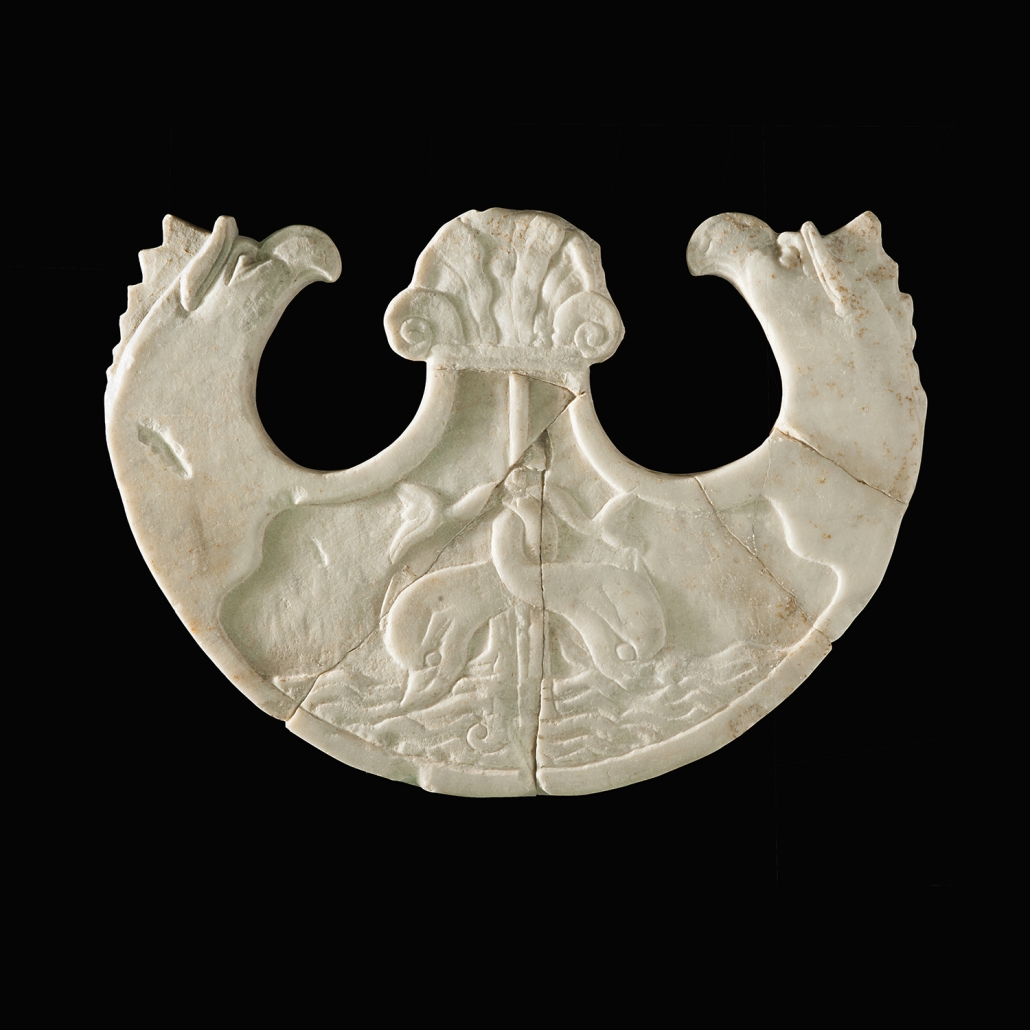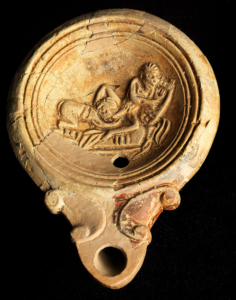BUSCAR PER:
Oscillum with Bacchic decoration

Oscillum with Bacchic decoration
1st century ADAlthough the specific place where it was found is unidentified, it is known that it comes from Badalona and that in 1955 it was exposed at Museo Arqueológico Pro vincial de Barcelona of that time. It has a pelta-shaped, simillar as a half moon, with a griffin represented at each end. It is decorated on both sides. In one, there is a profile of a tragic theatrical mask with a Flavian hairstyle, looking to the right, an element that reminds us that Bacchus is the god of comedy and tragedy. It has a torch in front of it, an element that usually carried the Maenads, to illuminate the route in the bacchanalia, nocturnal processions in honor of the god Bacchus. On the other side, there are two dolphins with the tails screwed in a ship’s rudder. This decoration illustrates the myth of the kidnapping of Bacchus by pirates Tyrrhenian who wanted to sell him as a slave in Naxos, where he went to teach them the cultivation of the vineyard. As a punishment, the god transformed them into dolphins.
The oscilla were decorative elements very common in the wealthy Roman houses, especially in the porched gardens. They can also be seen drawed in the mural paintings of the large domus of Pompeii, Herculaneum or Rome. These elements, where we mostly find bacchic themes rep resented, had a decorative meaning but also were used to give protection to the house and the family. This oscillum is very uncommon in regard to the representation of the myth of the Tyrrhenian pirates. Regarding the mask, it is a type of decoration more frequent, as is the one of satyrs (young or old), the maenads, the animals or the hampers with fruits. Surely it is a piece made out of the Iberian peninsula that must have reached through the maritime trade. Because of its typology and decoration, it can be dated in the 1st century AD.
Material: Marbel Dimensions: 36,7x25x2,4 cm Ref.: 22066 (deposit Museu d’Arqueologia de Catalunya-Barcelona)Altres peces del mateix període
Venus
1st century AD
Tabula Hospitalis
98 dC
Hinges
1st century BC
Oil lamp
First half of the 1st century AD






